Posted by
Mordy Oberstein
Saying that Google Ads competitor analysis is important is all but an obvious cliche. The devil is really in the details. That is, how do you go about doing so? That means questions like, what is the best way to monitor your Google Ads competition, or is there even
A Dual Approach to Analyzing Your Google Ads Competition
There’s no “single best way” to keep tabs on your Google Ads competition. How can there be? There are simply so many facets
So then how do you go about properly dichotomizing your Google Ads competition analysis? So as I mentioned, there are numerous ways to go about this with a variety of ways to segment your inquiry. That said, I’m going to offer two compelling ways to portion your Google Ads competition investigation.
==> Check out our PPC Strategy Guide
Universal Google Ads Competitor Analysis – Scoping the Daily Competition
I know there is a lot of
- What are my competitors focused on?
- Where is my industry heading?
- Which competitor presents the greatest overall threat to my success?
- What are the strengths and weaknesses of my competitors?
Allow me to demonstrate using PPC analysis tools. To do so I’m using our Daily Google Ads Explorer because it allows me to see all of the Google Ads ads my competitors are running each day (for those keywords I track in a campaign). Below are some actual Google Ads ads within the discount flight industry which have been conveniently organized by domain:
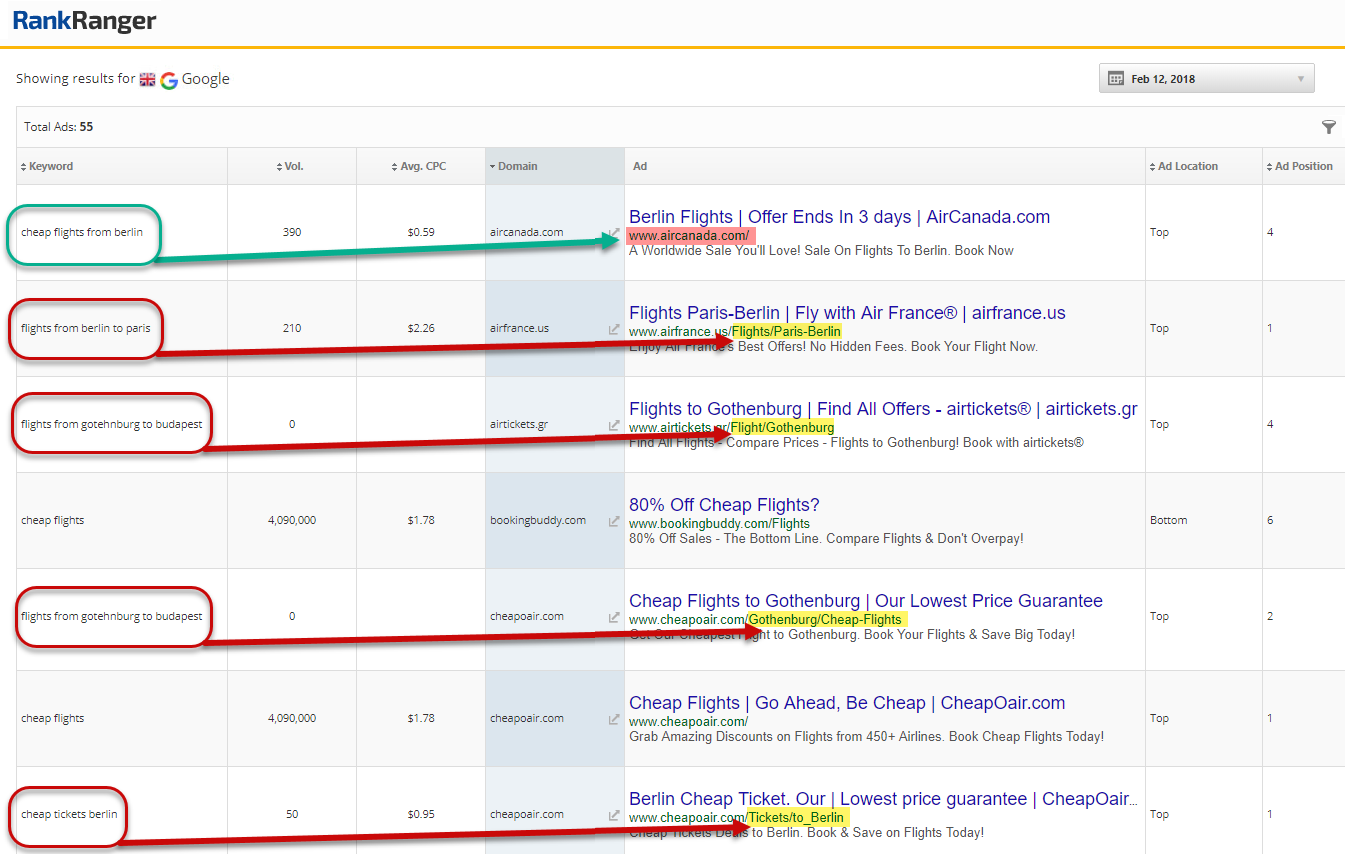
If you’ll notice, the ads tied to a keyword that mentions a specific flight location directs the user to a landing page related to that very location. Every competitor does that. Except one. Air Canada, for a keyword targeting flights to Berlin, pushes anyone who so chooses to click on the ad, to the site’s homepage. Interesting. I might not have expected
Here’s another quick one to demonstrate how this method can yield results when trying to determine what the competition is focused on:
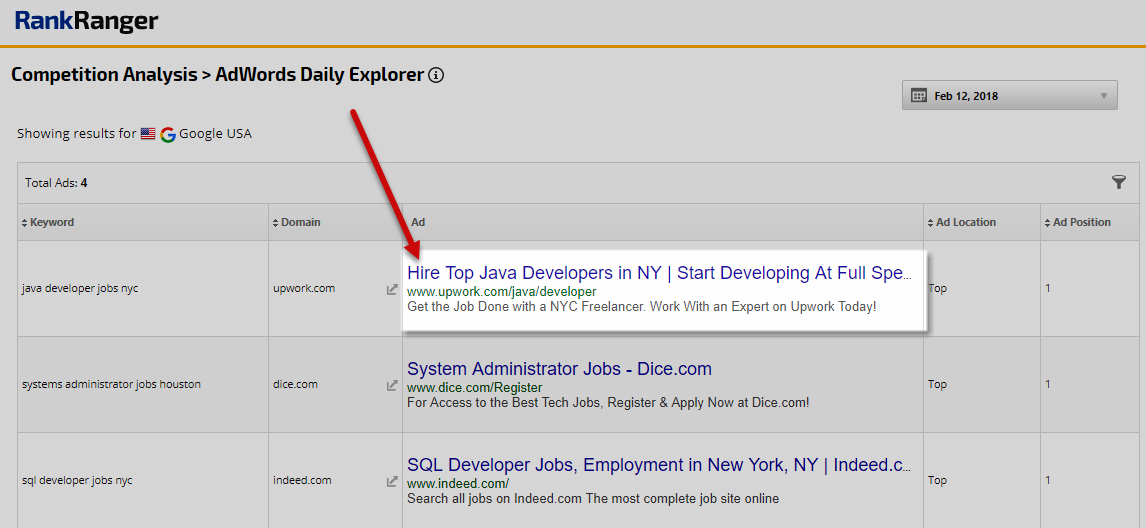
What we have here are keywords for jobs by location. Notice though that the first competitor, unlike the following two, is targeting employers, not job searchers. It could be, that upon seeing this, you may need to update and diversify your Google Ads ads. It could also mean, should you increasingly see this type of ad, that the entire market is shifting. Think of the implications. Seeing this ad type more frequently among your competitors could indicate that the entire job market is shifting, that there are more jobs than job seekers, and as such employers are having a hard time. In such a case would you still write Google Ads ads targeting job seekers? Point and case.
Keyword Drilldown for Google Ads Competition Analysis
As I already stated, there is something to looking at Google Ads through the lens of your products or services. There are scores of scenarios where you certainly want to drill down deep into the competition’s Google Ads performance as it relates to a specific product or service. Just imagine you just launched a product, or better yet, you are about to launch a product or service. Surveying the competitive field and gaining insight into what the competition is “up to” can be invaluable.
Again, there are a lot of ways to go about scoping out the Google Ads “scene” in this context. One such way is to work on a per keyword basis. The obvious upshot is that you can choose to hone in on a keyword (or keywords) that relate to a specific product or service.
Per Keyword Analysis to Determine Google Ads Ad Viability
Before we get into the nitty-gritty of drilling deep into Google Ads on a per keyword, per product/service basis, it’s important to get a good sense of what the competitive field looks like. Let’s go with the scenario where you are about to launch a product. It would make good sense to see what the Google Ads market is for that product/service (i.e., is it highly competitive, etc.).
One method to make that determination is to see how consistent the Google Ads market is for a keyword you wish to target. Meaning, one of the ways you can discover how difficult it will be to break into the Google Ads market for a keyword is by looking at how volatile the competitive field is. Obviously, if there are a large number of sites that rank consistently well for the keyword, carving a spot for yourself is going to be a bit more difficult than say a situation where Google does not give Google Ads preference to specific sites.
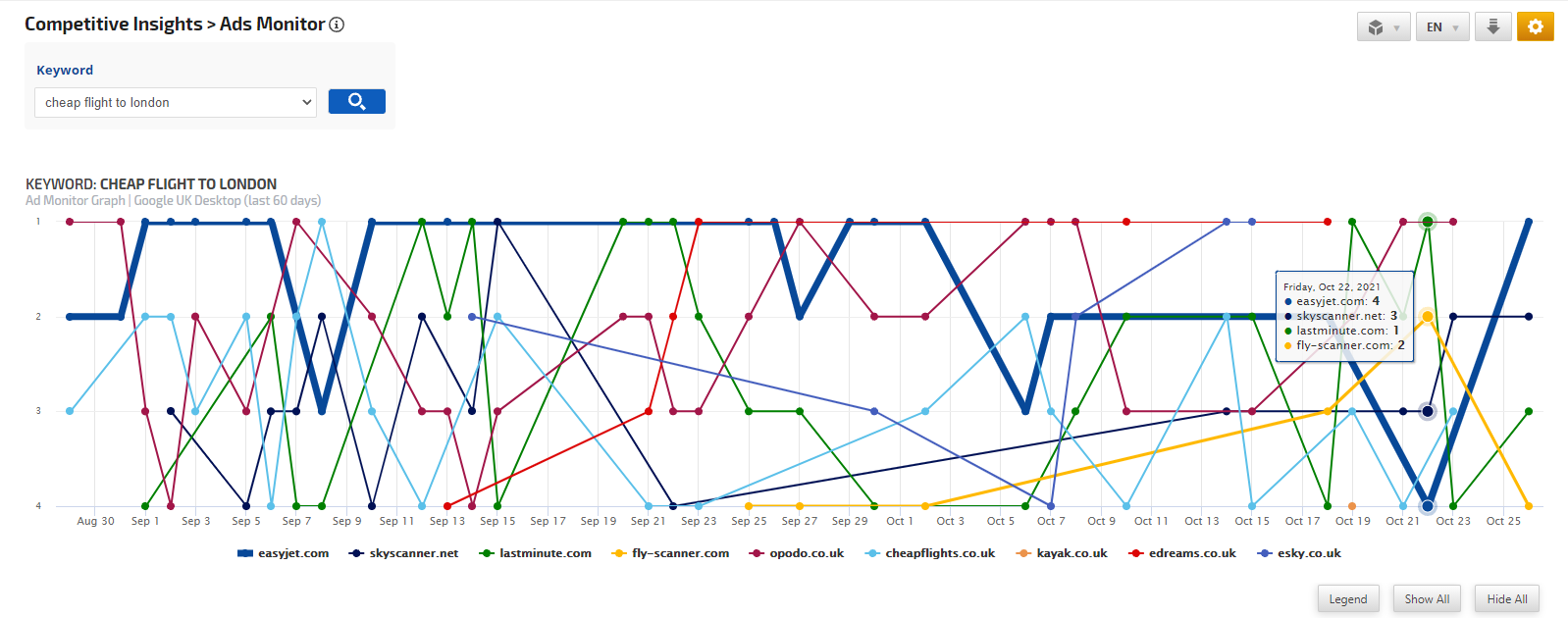
The Google Ads market for the keyword ‘cheap air tickets international flights’ has stabilized over time, making it harder to break into, per the Google Ads Monitor
Isolate What Google Ads Copy Works Best
One way to survey the Google Ads competition is by dissecting their ad copy on a per keyword basis. Why would you want to do this? So let’s again run with the idea that we’re about to launch a new product or service. If we were to look at the competition and analyze their language, we could determine what is and what is not working for them from a copy perspective. To oversimplify this process, say you notice that titles or descriptions that include specific pricing don’t rank as well as those without it, wouldn’t that be one mistake to avoid?
Well, wouldn’t you know, for the keyword airfare deal
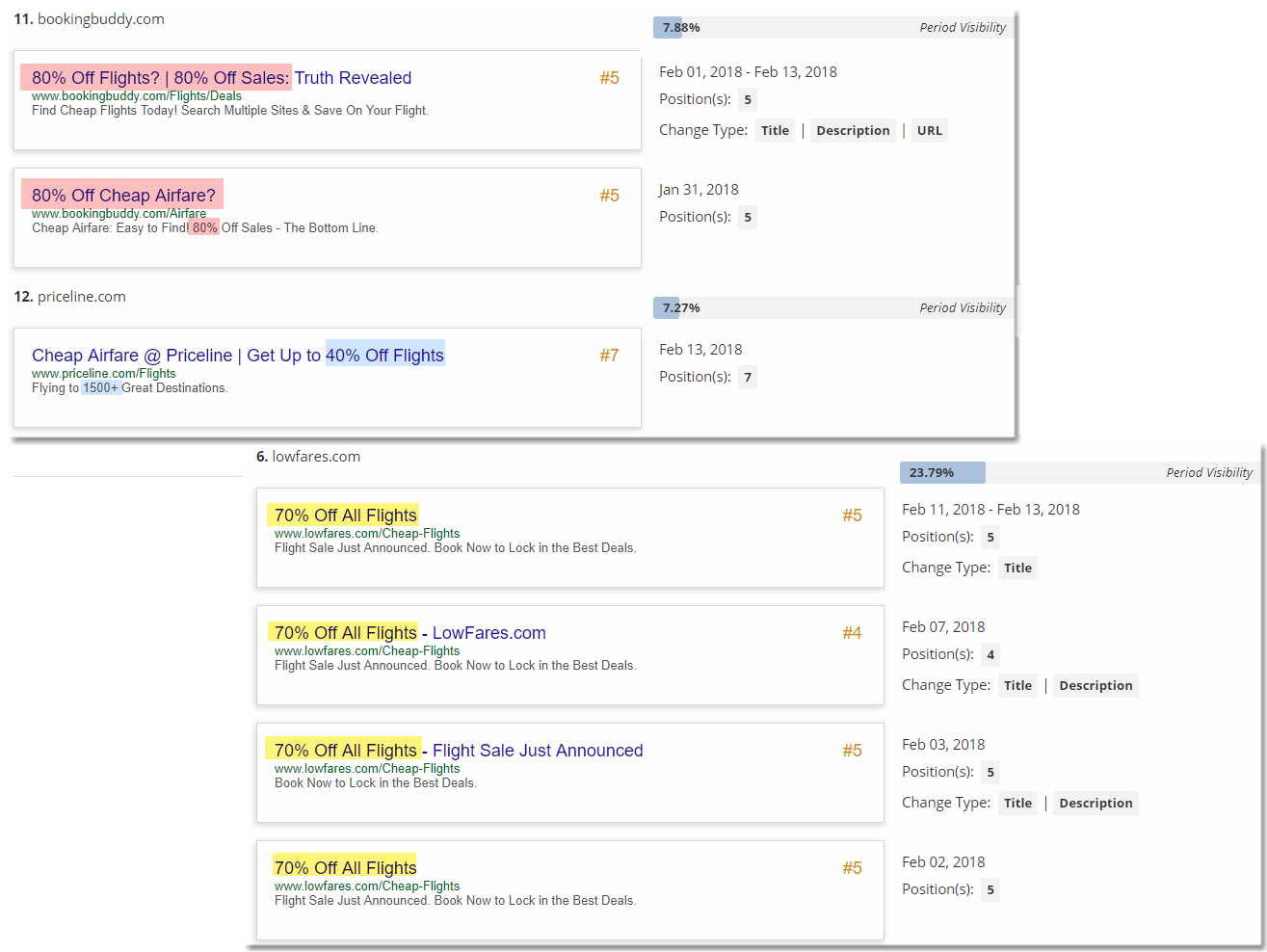
Let me explain what it is you’re looking at above. The tool I used to track this (our very own Google Ads Monitor), among other things, shows you the changes made to a Google Ads ad, along with the position the ad was in before and after the change to its copy. For example, the Booking Buddy site changed the description of their ad and removed the 80% phraseology from the description. What it did not remove was the 80% phraseology from the title. As such, what it did not do was move at all (over a 13 day period) in the Google Ads order on the SERP.
Even famed name your price flight site, priceline.com, could do no right. Its promise of a 40% flight savings bargain seems to have only discounted its Google Ads rank. (Disclaimer: I am not saying that the positioning of these ads on the SERP is caused by the numeric phraseology. I am merely highlighting a very compelling correlation. This would be a good opportunity for some testing.)
Are You Your Ultimate PPC Competitor?
Switching gears a bit, let’s discuss your ultimate competitor. Now, this competitor is smart, cunning, and happens to possess both inner and outer beauty. Of course, this competitor, if you haven’t put the clues together yet, is you. You are your own competitor.
You might be asking how in the world are you your own competitor? Well, the last time I checked money didn’t grow on trees (OK, that’s not exactly accurate, I have admittingly never actually gone out and checked any tree, ever, to see if money was growing on it). Meaning, you have a limited supply of the universal commodity. When you don’t use that money effectively (which I am not saying you do), you are your own worst competitive nightmare.
This is not as uncommon as you may think. Yes, we’re all extremely careful with our Google Ads budgets, but that does not preclude us from falling prey to advertising waste. It’s crucial to think outside of the Google Ads context. Some important factors to consider are:
- Are Google Ads the best PPC medium for my site and my situation (yes, it is possible that you might be better off on Bing).
- Are PPC ads even the best way to spend my money, perhaps I’m better off spending my money on call campaigns? (There is no sin in giving priority to something other than paid search.)
- What could I do with the money I might save by using a less expensive and even less successful advertising medium (perhaps email marketing)? (Just because something is successful, doesn’t mean the money can’t be better spent elsewhere.)
- What’s the cost to benefit ratio of running Google Ads campaigns to improving my organic SEO? (Yes, organic SEO could be more beneficial than Google Ads depending on the circumstances… heresy right?).
Whatever the case, it’s important to perform a cross-medium data analysis (i.e., compare your Google Ads campaigns to your Bing Ads performance, or to your email campaigns, etc., etc., etc.)
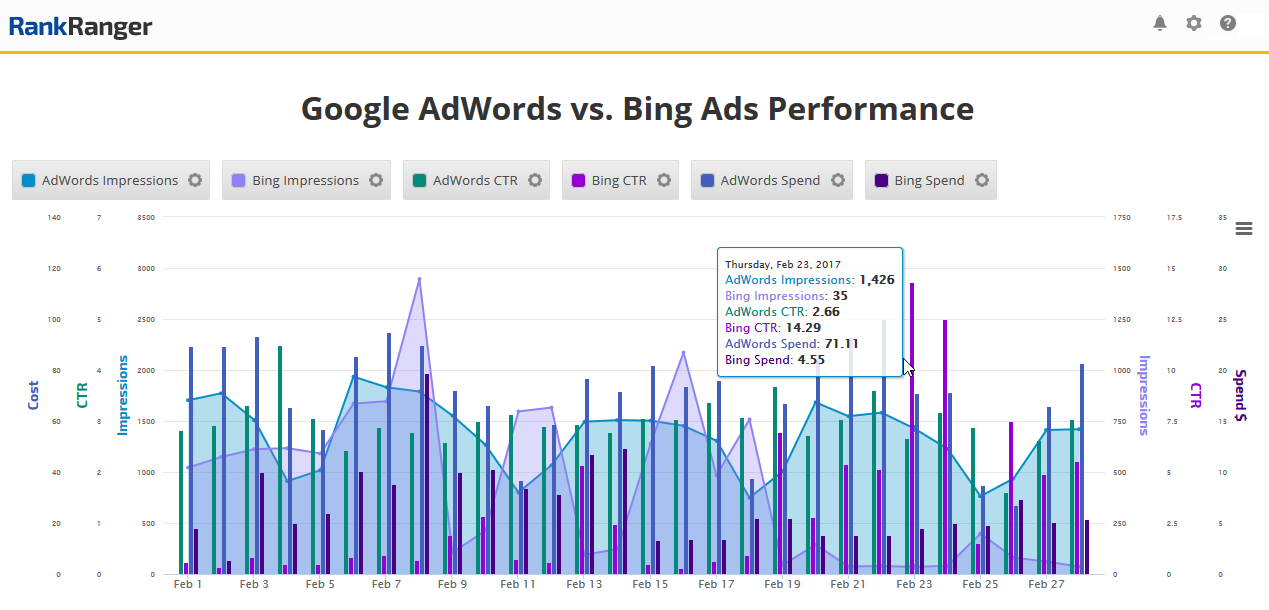
Compare data sets to determine the value of your Google Ads campaigns as shown here via the Insight Graph
The Making of a Google Ads Maven

I’ll say it again, because I’m a parent, and repeating myself is all but second nature to me. There are a

